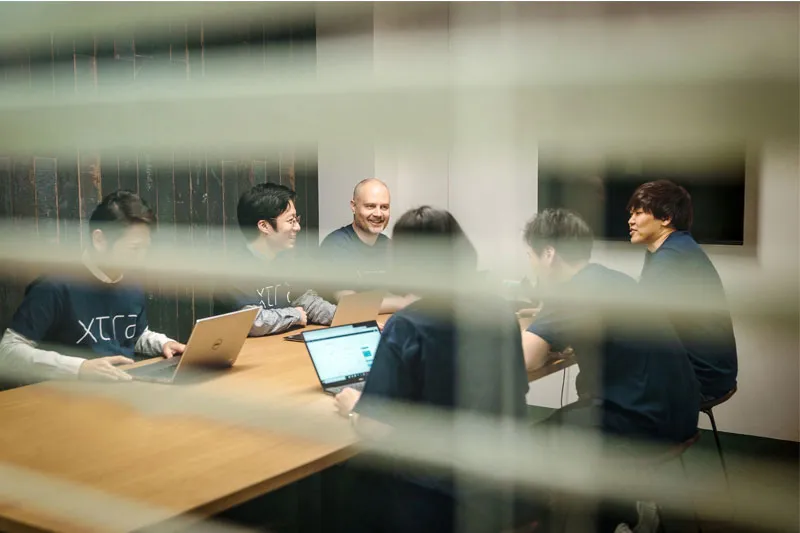How to Set Up a Customer Success Team for Success

Resilience. How would you define it or explain its meaning to someone else? What do you associate the word with? Strength? Toughness? The ability to weather the proverbial storm?
The Cambridge Dictionary defines it as ‘the ability to be happy, successful, etc. again after something difficult or bad has happened’ or, in more scientific terms, it’s ‘the ability of a substance to return to its usual shape after being bent, stretched, pressed.’
There are quite a few more definitions, but they all point to the same thing (and I don’t need to bore you with a repetition of dictionary definitions).
The ability to be resilient in life is pretty much essential, isn’t it? When I personally think about resilience, I tend to think of really large, old oak trees that keep standing, strong, rigid, and firm, despite decades of storms raging around them.
So, let’s go with the oak tree metaphor here: how can you, as a customer success manager, be a resilient oak tree? And how can you help your team be resilient oak trees too? Remember, the employee experience is also tied to the customer experience. If you don’t have a resilient team that can weather the storms that will inevitably come your way in the business world, you definitely won’t be able to give your customers any sunshine and rainbows once the storm has passed.
In this article, I’ll discuss how you can help build resilience in your customer success team (and in yourself as a CSM) so that you can develop an awesome workplace culture and employee experience that will, naturally, lead you to delivering an exceptional customer experience.

Table of Contents
Customer Success Team Performance: The Eye of the Storm
While it’s pretty easy to write about what a customer success manager needs to do to keep his/her customers happy and turn them into advocates for the brand, in practice, it’s really not so easy, is it?
Some fun-but-so-funny fact: According to Churnzero, ‘a bad customer experience will have a reach twice as large as a good experience, and it will take 12 positive experiences to make up for a single bad one’. What’s that saying about your reputation being ruined in a second despite a lifetime of good deeds?
Alas, this is the way business – and life – work. You can have perfect weather for 364 days of the year, but it’ll take just one storm to destroy all in its path.
Working closely with customers is challenging. From receiving difficult feedback and having frustrated customers who just aren’t a good fit to having highly demanding customers and ones that are just super impatient, CSMs will always have their work cut out for them.
Now, in order to deal with customers, you’ll need to have a resilient customer success team. They say that charity begins at home (it seems I’m on a roll these days with these proverbs), so in order to give your customers the best experience possible, you’ll need to be a part of a team that consistently strives towards creating a positive employee experience.
Creating a Resilient (And Brilliant) Customer Success Team
This post isn’t just for customer success leaders – it’s for everyone on the customer success team. Your business is built on the successful outcomes of your customers, and a strong and successful team will, naturally, lead to an increase in your SaaS renewals, upsell opportunities, as well as further develop strong relationships with your customers. Everyone contributes to the resilience of the team, so let’s look at 15 ways you, as a CSM, can contribute to your team’s resilience:
1. Rethink the way you see challenges.
Failures, disappointments, frustrations – they’re basically all just seeds for ultimate success. You need to be honest and realistic about your setbacks. Always bear in mind that customer success teams are relatively new in the business world and the profession is still growing.
You are guaranteed to encounter unique challenges that will require the whole team coming together to find a solution and a way forward. Be honest with yourself and with your team: if you encounter a setback or difficulty with one of your customers, ask for help and rely on your team members to help you solve the problem instead of trying to figure it out alone. Asking for help when needed helps you to become more resilient, so don’t be afraid to depend on your team members when needed.
2. Look at setbacks as KPIs you can track.
As a CSM, you’re always keeping track of your accounts and keeping a close eye on potential churn and retention or upsell opportunities. However, this should never be done in isolation. Organize weekly syncs with your team where you find out how you can best support each other with your own particular challenges, and, if need be, involve management when things need to be escalated. As April Oman, VP Customer Success at Zuora, states: ‘The more information you know about which types of customers are churning, when, why and how, the easier it is to identify actionable trends.’
Another good idea is to have a health scoring system for CSMs to rate the overall customer health of every account and warn the team of any ‘risk-for-churn’ red flags (customer success software like Natero or Amity are great for this). This is one of the first things Jay Nathan, SVP of Customer Success at PeopleMatter, did after he lost a major customer.
By turning setbacks into KPIs, you’re moving from the personal to the professional: the setback shouldn’t be taken personally, and it isn’t meant to defeat the team. By viewing them as measurable KPIs, you’ll have the opportunity to focus on how to address them by setting SMART goals that you, as a team, can achieve.
Also remember that one of your goals as a CSM is to anticipate roadblocks and speed bumps your customer will experience, so by staying ahead of the curve by tracking setbacks, identifying patterns, and addressing these issues, you’re more likely to succeed in anticipating those roadblocks and helping your customers achieve their goals quicker. And you know all too well that when you help your customers achieve their goals, they’ll associate your company with success, which means a lower customer acquisition cost thanks to increasing your customer retention rate.
3. Reduce the number of daily decisions you have to make.
Make each day as productive as possible and use your resources wisely. Prioritize your tasks (using a project management platform like Jira, Trello, or Process Street), use customer success software (like Intercom, Totango, or Userlane ;)) or a contact management software (like SalesMate), and make changes one at a time. Also, you need to be patient when it comes to implementing changes in order to minimize churn.
There’s also the concept of Most Important Tasks (MIT) that you can try out. Your MIT is the task you need to – or really want to – get done today. In other words, it’s a critical task that will create the most significant results. You can have more than one MIT, but keep the list to a minimum and keep it separate from your normal to-do list. This will help you and your team to prioritize tasks, cope better with the more stressful tasks, and focus on your customers’ needs and priorities.

4. Automate the tasks you can.
It goes without saying that automation is here to make our lives easier. By using automated programs to help you manage your customer success tasks and efforts, it’ll be easier for you to gauge the impact of your efforts. Automation also saves time, meaning you have more time to focus on personalizing the experience for your customers as well as working together with your team to strategize and make improvements where necessary.
5. Focus on your purpose as a CSM when the going gets tough.
When challenges arise, take the time to refocus on your purpose as a team as well as your purpose as a CSM. To reiterate my earlier point, customer success teams are relatively new to the business world, which means they’re also ‘foreign’ in that other departments may not have a good idea of what your value proposition is. You can develop strategies to indicate your value (such as having an ROI dashboard for your CSM team), but you also need to understand your own personal and professional value.
Remember why you are a CSM, and what you believe your overall purpose is both personally and professionally. The same goes for the team: define your purpose as a team, what you want to achieve together, and figure out how you can support each other to achieve your goals both individually and as a team.
I strongly believe in accountability: hold your fellow CSMs accountable for your personal and professional actions, encourage each other when needed, and never ever play the blame game. To throw in another proverb, always remember the phrase ‘united we stand, divided we fall’. Things will go wrong from time to time and mistakes will happen, but you should never blame anyone for a mistake. If one of your team members makes a mistake, address it without blame and figure out a way forward.
It is so important not to have a ‘culture of blame’ when building a resilient customer success team. Blaming is simply unproductive, achieves nothing, and only causes hostility among team members. Help each other be resilient when mistakes happen by showing support and encouragement and offering guidance on how not to repeat the same mistake in the future.
The employee experience is a human experience, so treat your colleagues like humans and not just as ‘liabilities’ to the company when they’re not performing as well as they should for any number of reasons.
6. Quit the things that don’t work.
You have to face it at some point: not all projects and ideas will work or deliver the expected ROI. If something is not working, even after numerous attempts to tweak or improve upon the project, then it’s just not working. If there is a strategy that’s not serving your goals, then get rid of it.
Renowned psychologist Carl Jung once stated, ‘What you resist will not only persist, but will grow in size’. So if you’re trying to make something work that’s just not working, you’re probably only going to make things worse – and you’ll be wasting precious time and resources.
Now, this may be a little random, but in an episode of Grey’s Anatomy, one of the doctors said to his colleague: there is no shame in quitting, quitting isn’t failure. Failure is only when you haven’t tried at all. With quitting, you’ve tried, you realized it didn’t work out, you’ve learned something, and you’ll do it better next time. Those weren’t his exact words, but you get the gist.
We can apply this to customer success as well. Instead of wasting your time trying to find out why a customer isn’t achieving the same results as others even when you implement the same strategy, it’s best to let it go and find a new plan. Use your resources elsewhere and develop a new strategy that will better serve you and your customers.
7. Tap into your resources.
You’ve already achieved some great things and you obviously have the skills and qualities to make an excellent CSM.
But there will always be times when you feel stuck or at a loss with certain accounts. That’s normal! This is why your customer success team should create centralized documentation for these particular occasions. This way you’ll always know what to do when you run into difficult situations. Asking senior customer success managers for their feedback is also always a solid idea.
So when the rain starts to pour and the lightning starts to strike, remember the roots you’ve already planted (your passion, work ethic, dedication, and previous achievements). Keep in mind that when you sow the seeds of success by putting in extra effort, you’ll harvest the rewards in due time.
8. Be open to possibilities and always be willing to learn.
Your customers’ (and therefore your team’s) demands will always change, and you’ll need to be flexible, adaptable, and open to new ideas and strategies. Keep in mind that you’ll always be learning from your customer: what do they want, what are they trying to accomplish, in which direction are they headed, what their definition of success is.
Continuous learning contributes to resilience (they don’t say knowledge is power for nothing now do they?), so actively dedicating your time to learning – whether it be about customer success, business in general, or anything else that interests you – can only serve to be of great benefit to you.
Josh Waitzkin, author of The Art of Learning, sets aside a period of time each day for learning and creativity. And this is why he does it:
I have built a life around having empty space for the development of my ideas for the creative process. And for the cultivation of a physiological state which is receptive enough to tune in very, very deeply to people I work with … In the creative process, it’s so easy to drive for efficiency and take for granted the really subtle internal work that it takes to play on that razor’s edge.
Learning for your own development will naturally have an impact on your professional development. Take the time, when you can, to learn for yourself, and each day, learn something from your team: listen to them, develop empathy, communicate your ideas without judging. By learning with and from your team, you’ll be able to better serve and engage with your customers.
As Michael Simmons, co-founder of Empact, advises, you need to embrace a ‘learning lifestyle’. He also gives an excellent example of how you can adopt this lifestyle at work:
He uses the example of a sales call, where most sales professionals will do some research before the call, have the call, and then record and save their notes and move on. But someone who embraces a learning lifestyle would think about what skills to practice on the call, practice this skill on the call, and then reflect on the lessons learned from the call. For an extra level of learning, s/he could ask a colleague for feedback.
This exact same scenario can be applied to CSMs. Practice your skills, see where you can improve, be open to feedback and ideas, and learn. This way you’re benefiting not only yourself but your customer too because the more you practice and hone your skills, the better you get at executing them, which is a win-win for your team and your customers.
9. Welcome and embrace rejection.
The more you work with customers – especially the more challenging ones – the better your interactions with them will be. You’ll learn not to overreact, take things too personally, or escalate the situation unnecessarily. By working with your customers, you’ll need to accept that you’re signing yourself up for occasional harsh feedback and rejection. You need to welcome it, accept it, and use it to improve upon the solution you’re currently offering your customer.
Keep in mind that it’s not personal: your customers want the best from your product and solution, and they’ll push you to give it to them. If a customer of yours churns or gives your team and product a scathing review, find out why. Ask them questions. Figure out what went wrong, and use the feedback to improve for future customer discussions.

10. Rely on your team.
According to psychologist Sherrie Campbell, we are more resilient when we have supportive relationships to fall back on. Your customer success team is diverse – it comprises people of different ages, experience levels, talents, skills, and viewpoints. Leverage your team’s unique capabilities and work together to build each other up.
Burke Alder writing for clientsuccess sums this up succinctly:
Customer success is not just the responsibility of a handful of people in one department in a larger organization. Every person working for a SaaS organization … should be focused on creating the best possible customer experience for new, current, and prospective customers.
11. Build a customer success (and a customer-focused) culture.
While this may not be directly linked to resilience, having a customer success culture that is laser-focused on the customer is critical for ensuring business success. And you know that super cliche saying that says ‘how can you expect others to love you when you don’t love yourself’? Well, it actually rings a little true here: you need to have an awesome employee experience and really enjoy what you do in order to provide your customers with the best experience possible. What happens internally reflects externally: an unhappy customer success team will definitely not contribute to the success of your customers.
12. Build trust.
Every relationship needs trust, honesty, communication, and engagement. Without these foundations, you simply cannot have a healthy relationship. This is true for both personal and professional relationships. You have to build trust with your team members and with your customers – not one or the other. You cannot be a lone wolf in customer success.
Oh and important note: you need to treat all customers with the same amount of respect. We’re humans, and we have favorites, but this doesn’t necessarily mean you can always give preferential treatment to your favorite customer (or the one that’s bringing in the big bucks). Yes, you have to tier your customers – it’s a harsh reality – but that doesn’t mean you should overlook your ‘smaller’ customers and not invest in their success and experience.
Never pass up on an opportunity to build an intimate relationship with your customers, even the smaller fish in the pond, because they may just very well become your brand evangelists, preaching the good news to other potential customers.
And the same goes for your team: treat your colleagues as equals and try to adopt a flat hierarchy structure. You’re not there to outwit, outlast, and outplay each other – this isn’t Survivor and your purpose is to be a cohesive team that works for the benefit of the customer.
13. Know that resilience can be learned.
Understand that resilience can be learned and that it may change over time depending on the environment you’re in. If resilience can be learned, it means it can, in a sense, be taught as well. If you’re good at handling certain situations, explain to your colleagues how you came to be good at handling such a situation and what skills you’ve developed.
14. Spend time with your team.
Quick example: the CEO of Zuora took CSMs to offsites where they tackled some existential questions such as, ‘who are we?’, ‘what do we do?’, and ‘how do we get closer to our customers?’. Team building activities and offsites are never easy, but they are designed to make you and your team more resilient and to develop a deeper bond. You work closely together in a short period of time to tackle challenges, overcome differences, and find solutions that will help you grow as a team, which will better prepare you for dealing with your customers.
And never underestimate the power of intentional meetings where you discuss strategies, goals, achievements, challenges, and setbacks. Schedule regular meetings and stick to them and use this time to create time for yourselves and your customers.
15. Resolve conflict and harness stress as a catalyst for growth
When confronted with a stressful situation or when dealing with a difficult customer, it’s imperative to not overreact, become overly emotional, deny the situation, or avoid the situation. Whenever conflict on your team arises, help put the conflict in a broader perspective and analyze your role and the role of other persons involved.
Never leave the conflict unresolved and face it head on and sort it out it by giving and receiving assistance and encouragement.

Building Resilience and A Strong Customer Success Team
Building resilience takes time. You need it to make strong, well-informed decisions. You need it to help you expect the unexpected. You need it to stay rational when the emotions threaten to overwhelm. You need it for both personal and professional success. And you need it if you want your customer success team to work to the best of their ability.
One study sponsored by Vodafone and Nationwide found that nearly all of the study’s participants believed that resilience is needed for job success.
Experience and training will only get you so far when it comes to dealing with deadlines, stressful situations, and tumultuous changes – the rest comes down to resilience. And don’t worry, resilience doesn’t necessarily come down to innate ability or genes – you can learn the skills and attitudes to help you become resilient (an oak tree – I wasn’t going to let that metaphor slip).
Developing skills of resilience will help you and your team face challenges, conflicts, and difficulties. By developing positive and productive relationships with your team – relationships that are built on trust – you will have the grounding to plant firm roots and develop strong, healthy, and flourishing relationships with your customers.
Always remember that everyone reacts differently to stress and conflict and your interactions with customers will never be 100% exactly the same. Developing resilience, therefore, is a personal process.
As a CSM, you play a critical role in the success of your company. Resilience is, therefore, a must, and we need it every day to cope with life’s stressors. If you’re looking for some advice and guidance on customer success and resilience, here are some highly recommended books for you to read (and you can also check out our list of customer success and customer experiences conferences to attend – engaging with fellow leaders and industry professionals will undoubtedly encourage you, teach you, and inspire you).
Customer Success
- Delivering Happiness: A Path to Profits, Passion, and Purpose by Tony Hsieh, CEO of Zappos.com
- The Effortless Experience by Matthew Dixon, Nick Toman, and Rick Delisi
Resilience
- The Happiness Advantage: The Seven Principles of Positive Psychology That Fuel Success and Performance at Work by Shawn Achor
- Resilient: How to Grow and Unshakable Core of Calm, Strength, and Happiness by bestselling author, Dr Rick Hanson.
Having a resilient customer success team is exactly what your business needs for growth and profitability. Why not use the culture you’ve developed in your team and champion it to the rest of your organization? Check out our webinar replay with Amy Mustoe, senior consultant and coach with The Customer Success League, on how you can use your customer-centric strategy to increase customer lifetime value and streamline your company’s success.

